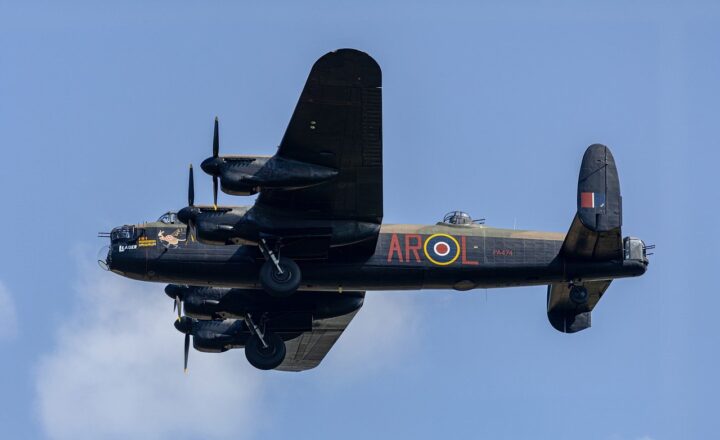Military and Civilian Roles: How Different Countries Balance Defense and Domestic Safety
November 14, 2024

In an increasingly complex global landscape, the distinction between military and civilian roles within a country’s defense strategy is becoming critically important. Each nation adopts varying approaches to balance military duties with the imperative of maintaining domestic safety. The interplay between defense and civil responsibilities influences public policy, economic stability, and societal cohesion.
1. Historical Context: Roots of Military and Civilian Roles
The historical context of military and civilian roles can be traced back to ancient times. Civilian populations often relied on their governments to provide protection against external threats. Over time, as states became more powerful, the functions of the military and civil services evolved. Key events such as the World Wars demonstrated the need for countries to mobilize civilian resources for military purposes, leading to a blend of military and civilian responsibilities.
Countries like the United States shifted to models where civilians played roles in defense, notably through the establishment of the National Guard and Civil Air Patrol. In contrast, countries like Switzerland maintained a unique militia system where armed forces and civilian duties intertwine, reflecting a national ethos of self-defense and security.
2. Organizing Military and Civilian Interactions
Successful integration of military and civilian roles depends upon clear organizational structures and communication channels. Various countries adopt different models:
- The Dual-Use Capability Model: Some countries develop dual-use capabilities where military resources can assist in civil emergencies, such as natural disasters or pandemics. For example, the Brazilian military is frequently deployed to assist in public health initiatives and disaster relief, illustrating a strong civil-military relationship that maximizes resource utilization.
- Strict Separation Model: Other nations, such as the United Kingdom, maintain a strict separation of military and civilian responsibilities, promoting civilian safety via law enforcement agencies while military forces focus primarily on national defense. Each unit undergoes specialized training, which delineates their roles clearly.
These contrasting approaches reveal the strategic underpinnings that influence how countries prioritize military readiness versus civilian safety. It also highlights the need for adaptability in governance when addressing security challenges.
3. Case Studies: Countries in Focus
To further understand military and civilian balance, let’s delve into specific examples from various countries:
3.1 United States
In the United States, the military’s role extends beyond combat missions; it often involves terms of domestic security when called upon during crises such as natural disasters. Agencies like the Federal Emergency Management Agency (FEMA) coordinate with military units to fulfill civilian needs, showcasing an effective partnership that ensures both defense and domestic safety.
Additionally, the Posse Comitatus Act places restrictions on using the army in domestic law enforcement, thereby reinforcing civilian authority in security matters while permitting exceptions in emergencies.
3.2 Japan
Japan offers a unique perspective as a pacifist state with a constitution that limits military engagement. The Japan Self-Defense Forces primarily focus on disaster management and humanitarian assistance, emphasizing a cooperative relationship with civilian authorities. This model prioritizes domestic safety while maintaining minimal military capabilities for external threats.
3.3 Israel
Israel’s approach exemplifies an integrated model where military training is embedded within civilian life. Mandatory military service for young citizens fosters a strong sense of national responsibility. This enables immediate mobilization during emergencies while ensuring that civilian society is actively engaged in national defense. The partnership between civilians and the military embodies resilience and preparedness against ongoing security challenges.
4. Challenges in Maintaining Balance
Despite best intentions, several challenges arise in balancing military and civilian roles:
- Resource Allocation: A nation must allocate resources wisely between domestic safety and military readiness. Underfunding one area may compromise the effectiveness of the other, leading to vulnerabilities. Countries like Venezuela, facing economic crises, struggle to balance these needs effectively, impacting both military preparedness and civil safety mechanisms.
- Public Perception: The public’s view on the militarization of domestic policy can foster distrust if civilian roles are overshadowed by military influence. A balance must be struck to build trust between citizens and defense institutions, especially in democratic societies where civil liberties are prioritized.
- Evolving Threats: The rise of asymmetric warfare and non-traditional threats necessitates flexible responses. Countries must adapt and develop integrated frameworks that allow both current military capabilities and civilian protections to evolve continuously.
5. Future Trends: Emphasizing Integration and Collaboration
The future of military and civilian roles will likely focus on enhanced integration and collaboration. As global security landscapes become increasingly volatile, nations will be compelled to:
- Invest in Technology: Leveraging technology in emergency response systems can streamline coordination between military and civilian resources. Tools like drones and AI will enhance disaster preparedness and responsiveness, ensuring both sectors can work seamlessly during crises.
- Strengthen Training Programs: Incorporating training programs that educate civilians about defense tactics will promote proactive community engagement in security matters and disaster preparedness, ensuring a well-informed populace prepared for diverse threats.
- Enhance Public Trust: Engaging communities in decision-making processes surrounding defense policies will build trust and ensure that civil interests are represented within military frameworks. This participatory approach will foster a shared vision for national security that aligns the military and civilian sectors harmoniously.
Conclusion
Navigating the complexities of military and civilian roles in defense necessitates a holistic and adaptable approach. By understanding historical contexts, organizational strategies, and incorporating innovative technologies, countries can effectively balance their commitments to national defense and civil safety. As societies face evolving challenges, the integration of military capabilities with civilian systems will not only enhance security but also strengthen the bond between citizens and their leaders.
In an age where threats can emerge unexpectedly, fostering a resilient and interconnected framework between military forces and civilian populations is paramount for ensuring a safe and secure environment for all citizens.






